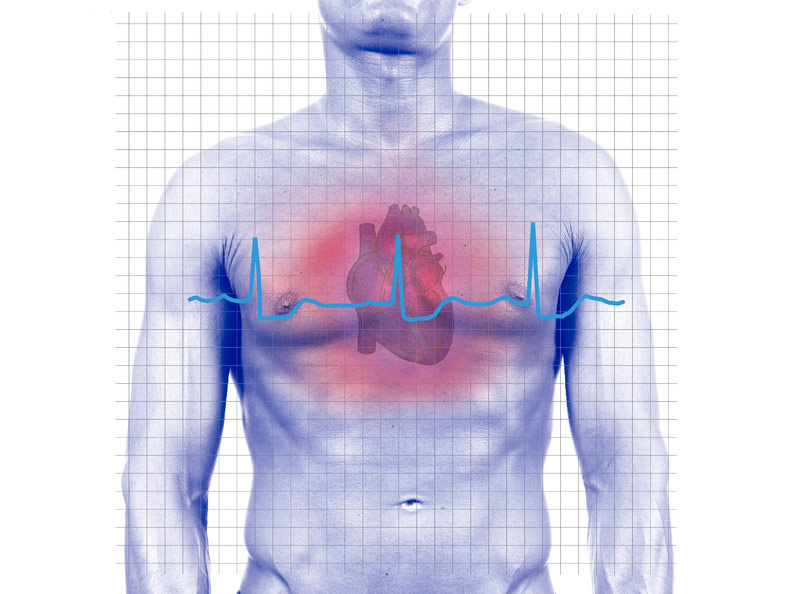New Way to Detect Heartbeat with Magnetic Mini-Sensors

A miniature magnetic sensor using a tiny cloud of atoms has successfully tracked a human heartbeat for the first time.
In a new study, researchers from the National Institute of Standards and Technology (NIST) and the German national metrology institute tried out the sensors – which until now have been operated mostly in physics laboratories – in a near-clinical setting.
The new experiments were carried out at the Physikalisch Technische Bundesanstalt (PTB) in Berlin, Germany, in a building described as having the world's best magnetic shielding – necessary to block the Earth's magnetic field and other external sources from interfering with the high-precision measurements.
The NIST sensor – a tiny container of about 100 billion rubidium atoms in gas form, a low-power infrared laser, and optics – measured the heart's magnetic signature in picoteslas (trillionths of a tesla). The tesla is the unit that defines magnetic field strength.
For comparison, the Earth's magnetic field is a million times stronger (measured in millionths of a tesla) than a heartbeat, and an MRI machine uses fields several million times stronger still (operating at several tesla).
In the experiments at PTB, the NIST sensor was placed 0.20 inches (five millimeters) above the left chest of a person lying face up on a bed. The sensor successfully detected the weak but regular magnetic pattern of the heartbeat.
The same signals were recorded using the "gold standard" for magnetic measurements, a SQUID (superconducting quantum interference device). A comparison of the signals confirmed that the NIST mini-sensor correctly measured the heartbeat and identified many typical signal features.
Get the world’s most fascinating discoveries delivered straight to your inbox.
The NIST mini-sensor generates more "noise" (interference) in the signal but has the advantage of operating at room temperature, whereas SQUIDs work best at –452 degrees Fahrenheit (-269 degrees Celsius) and require more complicated and expensive supporting apparatus.
A spin-off of NIST's miniature atomic clocks, NIST's magnetic mini-sensors were first developed in 2004. Recently, they were packaged with fiber optics for detecting the light signals that register magnetic field strength.
In addition, the control system has been reduced in size, so the entire apparatus can be transported easily to other laboratories.
The new results, described in the journal Applied Physics Letters, suggest that NIST mini-sensors could be used to make magnetocardiograms, a supplement or alternative to electrocardiograms.
Further tests of the NIST atom-based magnetic sensors at PTB are planned and could confirm the potential for more biomedical applications.
• New High-Tech, Flexible Pacemaker Tested on Pigs • Survey: Health Apps a Big Hit on Smartphones • 10 Profound Innovations Ahead
 Live Science Plus
Live Science Plus






